#digital citizenship
Text
“It is you and me in this digital world”
1.) What does it mean to be a digital citizen?
- An individual can be referred to as a digital user who is capable of being accountable in utilizing technology in the medium of online platforms as well as digital instruments to engage with the community to any degree. It is also described as an individual who has the proficiency as well as skills to effectively utilize digital technologies to transmit a message to others, partake in community, as well as construct and consume digital scope. Furthermore, it discusses all favorable engagement in the medium of the digital environment.
2.) How can you observe social, ethical, and legal responsibilities, in the use of technology tools and resources?
- An individual can observe social, ethical, and legal responsibilities in the utilization of technology instruments as well as resources involved by being cautious of how we conduct ourselves in society as well as digital settings. One must respect the privacy of another individual, an individual must not indulge in someone's confidential information, and utilize it in erroneous means that cause harm to an individual. Succeeding, abide by the ordinances on how a good citizen behaves. Know and learn how to act appropriately as well as in applicable manners that encompass transparency and laws about copyright. The mentioned components are some of the ordinances that we utilize to become responsible individuals when operating technology tools as well as resources.
3 notes
·
View notes
Text
Digital Citizens; Future Builders.

As the world changes and evolves, plenty of new concerns emerge, particularly as technology increasingly dominates our lives. Everyone's life has been greatly impacted by technology, which practically everyone uses to communicate, connect with people outside of our country, and generally make life a little easier. So, in order to stay up with the changes, we must also adapt. However, we must never lose sight of the limitation.
Knowing your role as a digital citizen who acts appropriately and cautiously when you interact online is critical. Be very responsible, respectful, and aware of your behavior online to ensure your safety. Don't reveal too much personal information. To interact with others safely and appropriately in the digital world, think critically and analytically. In addition, as new platforms are created and quickly gain popularity, a variety of social issues arise. In order to uphold our social, ethical, and legal obligations when using technology tools and resources, we must also show that we understand how to use it in ways that will not harm anyone. Spread the word about beneficial things, adhere to technology usage regulations, and always make the right decisions.
Let's use technology to build a better society as digital citizens!
2 notes
·
View notes
Text
Week 10 - Digital Citizenship and Conflict: Social Media Governance
The ‘Snowflake generation’ (Haslop, C., O’Rourke, F., & Southern, R. 2021), that's what we are. A generation of feeling offended by let's say, offensive things, but hey! It's nothing close to what the generation before us went through, right?
The term ‘Snowflake generation’, can be described as a somewhat derogatory way of labelling “young people” perceived for their “intolerance and over-sensitivity.” (Haslop, C., O’Rourke, F., & Southern, R. 2021)
The term, often utilised in the mouths of older generations, that can’t understand the concern surrounding harassment online. Who are, hypocritically, also the very individuals who refuse to engage in specific social media applications so would have no experience on the topic.
Digital conflict exists as different groups of communities online demand a sense of power, and therefore, diminish certain groups or individuals through online harassment.
Examples of online harassment range from sexual, impersonation, physical threats, rumour spreading, etc. and exist on the digital realm as a result of the lack of accountability, posed to individuals hidden behind screens seeking to impose power.
One of the most common online harassment examples is sexual abuse, in the form of ‘dick pics’.
A sad common denominator amongst my female peers, is that we all either have received a non-solicited dick pic, or know someone close to us who has…gross!
Unfortunately, this is not the only example of female targeted abuse online, “young women aged 18–19 years old were more likely to report degrading comments on their gender, sexual harassment and unwanted sexual requests” (Laura Vitis Fairleigh Gilmour 2017) However, being one of the most common forms, it can be argued that dick pics are a power move in the hands of men, so there is no questioning “women and girls’ participation in online spaces…marked by concerns for their safety.” (Laura Vitis Fairleigh Gilmour 2017)
The existing power thirst from men online, reflects that of real life, whereby similarly, women face higher levels of harassment, which Laura Vitis and Fairleigh Gilmour, 2017 raises a similar question of, “whether such harassment simply repeats real world gendered inequalities and tensions or whether it is a product of the Internet” (Laura Vitis Fairleigh Gilmour 2017)
Presently, attempts to minimise online harassment can be seen in social media governance, which takes form on applications such as Instagram and TikTok as something you might be familiar with as… ‘community guidelines.’
Personally, the times I have stumbled across community guideline restrictions, I haven’t been its biggest fan, with experience having my very PG rated TikTok videos removed based off ‘explicit content’ that falls into one of the many brackets of ‘unsafe viewing'.
Although, this is a good step in the right direction and allows prevention of explicit content, sometimes the governance might be argued as too strong - pushing the boundaries of removing digital communities freedom of expression. On the other hand, content moderation techniques imposed by social media applications such as Instagram, highlight the need for corporate social responsibility - Whereby, accountability has limited space to fall onto the individuals doing the bullying, so platforms need to assist in preventing it.
Another example of attempts to minimise digital conflict and harassment is the legislation put into place to encourage safety online ‘online safety act 2021.’
Yet still, harassment is prevalent and expected on all forms of social media as we speak, proving a difficult problem to combat - so what can be done?
References -
Haslop, C., O’Rourke, F., & Southern, R. (2021). #NoSnowflakes: The toleration of harassment and an emergent gender-related digital divide, in a UK student online culture. Convergence, 27(5), 1418–1438.
Laura Vitis and Fairleigh Gilmour (2017) 'Dick pics on blast: A woman’s resistance to online sexual harassment using humour, art and Instagram', Download 'Dick pics on blast: A woman’s resistance to online sexual harassment using humour, art and Instagram', Crime, Media, Culture. 13(3) 335-355.
6 notes
·
View notes
Text
How the verdict in Sim Ke Ting's case drew an outcry from activists and protesters on social media in Malaysia?
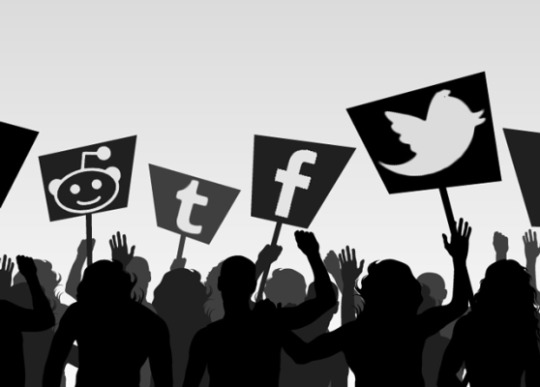
Social Media Activism
Social media activism is a type of online protest or advocacy for a certain cause (Newberry 2022). Because hashtags are so important in mobilizing movements on social media, the terms hashtag activism and hashtag activism are sometimes used interchangeably.
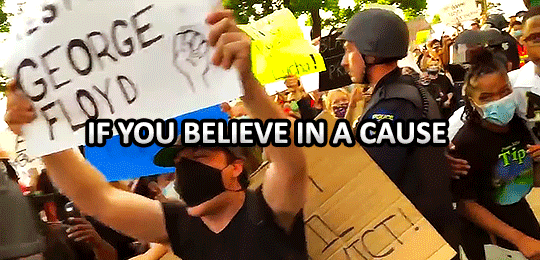
Activists And Protesters On Social Media In Malaysia
In today's networked media world, people can build groups to protest against something through the Internet. A Malaysian woman, Sim Ke Ting, accidentally hit 16 teenagers on her way home at night on the highway, causing eight death, two of them severe injuries and six of them minor injuries in 2017 (Timothy 2022). On March 28, 2017, the court found Shen Keting's not guilty of reckless driving. In 2019, the families of the 16 teenagers appealed again but argued that the defendant was wearing a seat belt, not using a cell phone, not speeding, and had the right of way, and that no warning was given at the time, so the offense was again acquitted.
But unexpectedly in 2022, this April, the family appealed again to Sim Ke Ting. This time, the judge found Sim Ke Ting guilty of reckless or dangerous driving causing death (Bernama 2022). She was sentenced to six years in prison and fined RM6,000. The case was posted online and on social media, causing a mass outcry from the public.
The majority of the internet users fought for Sim Ke Ting, saying that she was not at fault and that she was driving normally and not breaking the law. Most of the netizens scolded and opposed the parents who sued, saying that it was their own poor discipline that allowed their children to ride illegally that caused the accident. Many netizens organized and voted on social media platforms to oppose the conviction of Sim Ke Ting, a move that received widespread support and participation from netizens. The topic was followed at the time. After the verdict was announced, two petitions for the release of Sim Ke Ting appeared on Change.org, one of which stated that by 2019 the Traffic Tribunal had found that Sim Ke Ting had been driving safely and had not done anything illegal at the time of the incident (Bernama 2022). However, the accident was caused by a very dark, bumpy, and winding road, and the fact that she could not have predicted the 3 a.m. bike party. In less than a day after the two joint signatures were released, 250,000 signatures have already been accumulated.
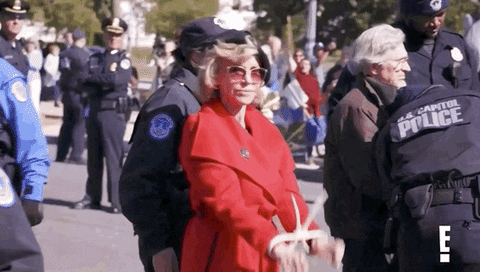
Conclusion
Shen Ke Ting is currently appealing and has paid the fees to resign from prison, and the case is still ongoing. This shows that the power of digital activism is as great as the unity of ants, as exemplified by the above real-life events. Are you one of the digital activists and protester in the case of Sim Ke Ting or in other aspects?
Referencing
Bernama 2022, ‘Case management of Sam Ke Ting's appeal in Basikal Lajak case pushed to Oct 13, MalaysiaNow, Viewed 14 October 2022, <https://www.malaysianow.com/news/2022/08/29/case-management-of-sam-ke-tings-appeal-in-basikal-lajak-case-pushed-to-oct-13>.
Newberry, C 2022, ‘Social Media Activism in 2022: How to go beyond the hashtag’, Social Media Marketing & Management Dashboard, viewed 14 October 2022, <https://blog.hootsuite.com/social-media-activism/#:~:text=Social%20media%20activism%20is%20an,used%20interchangeably%20with%20hashtag%20activism>.
Timothy Achariam 2022, ‘Sri Ram to lead Sam Ke Ting's appeal in Basikal Lajak case, Court of Appeal told, The Edge Markets’ , theedgemarkets, Viewed 14 October 2022, <https://www.theedgemarkets.com/article/sri-ram-lead-sam-ke-tings-appeal-basikal-lajak-case-court-appeal-told>.
5 notes
·
View notes
Text
Week 5: #ShoutYourAbortion's Impact on Digital Citizenship and Participatory Democracy

Social media platforms have become effective activism tools in the digital age, allowing people to advocate for social change, mobilize communities, and magnify their voices. One such initiative that has gained popularity recently is #ShoutYourAbortion, a grassroots effort to de-stigmatize abortion and give those who have had the surgery a stronger voice. The #ShoutYourAbortion movement, which got its start on social media sites like Twitter and Instagram, invites people to discuss their own experiences freely with abortion in order to break social taboos and promote unity among those impacted by reproductive healthcare policies. This study aims to explore its implications for digital citizenship and participatory democracy.
Intersectionality Framework
The #ShoutYourAbortion movement highlights the principles of intersectionality by acknowledging and amplifying the diverse identities and experiences of individuals affected by abortion. People from different socioeconomic, racial, and ethnic backgrounds are involved in the movement, demonstrating how these intersecting identities affect their views on healthcare access and reproductive rights. Through raising neglected perspectives and experiences, the movement adds to more general conversations about equity and social justice in digital spaces (Choi & Cristol, 2021; Kim & Lee, 2022).
Participatory Democracy
By giving people a forum to tell their stories, participate in public discussion, and push for changes to the law, the #ShoutYourAbortion movement is a prime example of participatory democracy in action. Through social media platforms like Instagram, participants make use of their rights to free speech and collective action, influencing public opinion and shaping the discourse around abortion rights and stigma. The movement embodies the principles of participatory democracy as outlined in the article by using digital technologies to promote expressive participation and personalised politics (Choi & Cristol, 2021; Kim & Lee, 2022).
Digital Citizenship Education
Understanding and navigating complex social issues in online spaces requires knowledge of digital citizenship, as demonstrated by the investigation of #ShoutYourAbortion on Instagram. Participants in the movement demonstrate digital citizenship skills such as critical media literacy, ethical engagement, and responsible advocacy. Educators and policymakers can draw insights from the movement to develop digital citizenship courses that promote inclusive discussion, critical thinking, and civic engagement in digital environments (Choi & Cristol, 2021; Kim & Lee, 2022).
All in all, examining #ShoutYourAbortion on Instagram illuminates the complex relationship that exists in the digital age between digital activism, citizenship, and public discourse. The movement is a prime example of the ability of social media to challenge social norms, raise the voices of the marginalised, and spark social change through the visual representation of personal narratives, advocacy messages, and group solidarity.
References
Choi, M., & Cristol, D. (2021). Digital citizenship with intersectionality lens: Towards participatory democracy driven digital citizenship education. Theory into Practice, 60(4), 361–370. https://doi.org/10.1080/00405841.2021.1987094
Kim, Y., & Lee, S. (2022). #ShoutYourAbortion on Instagram: Exploring the Visual Representation of Hashtag Movement and the Public’s Responses. SAGE Open, 12(2). https://doi.org/10.1177/21582440221093327/ASSET/IMAGES/LARGE/10.1177_21582440221093327-FIG5.JPEG
0 notes
Text
#parenting#internet safety#online safety#cyberbullying#child safety#digital parenting#online gaming#internet grooming#protecting children#family safety#child development#online security#digital literacy#cyber safety#parental controls#online behavior#internet education#digital citizenship#online privacy#parenting tips
0 notes
Text
I love when you get a bunch of notifications, where very clearly what happened was someone was reading something and saw a reply and went from subject a -> NEW TOPIC 1 for a while.
#Watching the digital fingerprint of a chance meetingof two distinct public streams of thought#10/10 English lacks a word for the precise emotion#Digital citizenship#Maybe digital social theory?#Idk not my area of academics :3
0 notes
Text
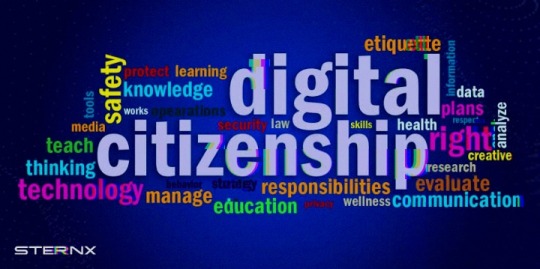
Empowering digital citizenship in the 21st century.

1. https://www.commonsensemedia.org/
This site is very helpful for parents and educators to properly choose movies, TV shows, Books, Games, Podcasts and Applications suitable for their children's/students' age. When you visit this site, you can then see the movies recommended with specific age provided below the cover page.
It also has 3 categories:
(1) For Parents;
(2) For Educators; and
(3) Our Work and Impact.
The first category is For Parents and includes the following:
• When you scroll down, you can see a section about Tips for Cybersecurity and data smarts for kids and parents which is very helpful in avoiding our children and students from any harm.
• After that, you can see 3 sub-categories: (1) Our Editors Recommend- this includes various poetry books, stories, movies, and TV shows that children and students can read and watch about the culture of other religions, monthly celebrations and holidays, and other options that's suitable for the readers' and viewers' ages. (2) Common Sense Selections- includes shows recommended for family entertainment. These shows were also sealed (it can be for Families or Teens) which proves that it has quality and impact. The last one is (3) Popular with Parents- these shows are very recommended by parents to watch, and you can also see and read their reviews about the show.
The next category is For Educators
• You can see 3 sections that you can click to view its content. These are Digital Citizenship—this help students take ownership of their digital lives; Best Apps and Websites—this section is useful if you're looking for tools and resources needed in your instruction with preferred grade level; and Professional Development—for teachers to build positive culture of digital teaching in the school setting.
• Below these sections are the AI movies, Books, and Podcasts that can be used in class discussion.
• Under this category is the Teach Digital Citizenship where teachers can look for free lessons and activities that will help build essential digital habits and skills of the students.
• It also encourages partnership between parents and caregivers to help the students reflect on how they use technology.
The last category is Our Work and Impact
• This category will inform the users about the media ratings and reviews of the site, where you can find curriculum and classroom resources, their approach—may it be at home, school, community, government and industry.
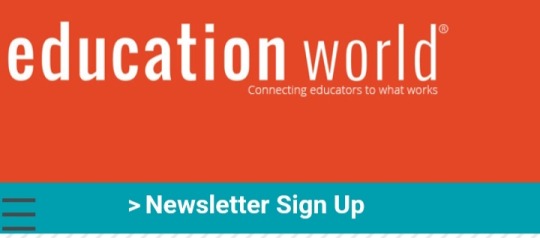
2. https://www.educationworld.com/a lesson/lesson-plan-booster/cyber- ethics.shtml
This site will help us look for activities that we can use in our discussion.
• The first thing you can see is the search bar where you can look for the topic or lesson
• When you scroll down, you can see a sample lesson—Lesson Plan Booster: Digital Literacy and Online Ethics
• You can also see the grade levels this lesson can be taught.
• Next is the Learning Objectives, of course, your objectives should connect to your lesson.
• After that is the preparation—this includes what activities you're going to conduct, strategies you're going to apply and materials you're going to use.
• Next to it is the proper discussion. It is where the thorough understanding of the lesson takes place.
• The last one is the Related Resources about your lesson, for you to look for more information.

3. https://sharemylesson.com/
The first thing you can see after entering this site is the search bar where you can search the topic you want.
Also, below it are the filter options that you may use for easy searching. You can pick any grade level, subject, and resource type. When you scroll down, you can see different lessons about the celebration or holidays every month. When you click one of each, you can then see the content of the lesson—the topic, who wrote the kesson review, the subject, specific grade level, resource type, attributes and license.
This site will really help individuals, specially the teachers in crafting their lesson plan, and itwill make the work much easier.
Below these sites are their background; other sources where you can search something to watch, create, read ang play; and contact information.

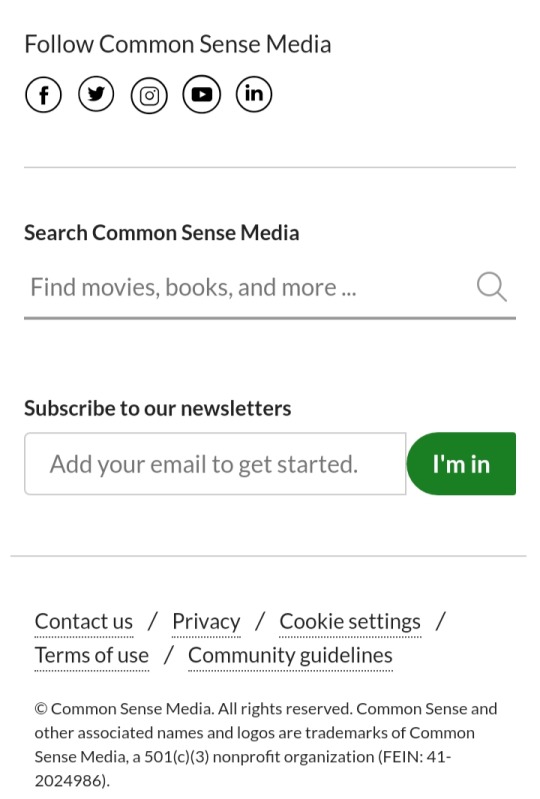

In conclusion, these sites are not just helpful, but also convenient since all ages can have access and use these sites for work, school, and games. These will help me to easily look for content-related activities which I can use in teaching in the future, can conveniently help me look for resources I needed for the lessons. Lastly, the information it provides will really help me grow digitally literate as it is their focus—to create digitally literate citizens.
1 note
·
View note
Text
Transforming Education: Unleash the Potential of Your Students with Strategia Advizo's Vocational Courses
Introduction: In today’s rapidly evolving world, the traditional education system faces the challenge of keeping up with the pace of technological advancements and changing job landscapes. At Strategia Advizo, we believe in empowering the next generation with the skills they need to navigate and succeed in the 21st century. Our suite of vocational courses, designed specifically for CBSE schools…

View On WordPress
#21st Century Education#Artificial Intelligence Education#CBSE Schools#Coding for Kids#Data Science Learning#Design Thinking for Students#Digital Citizenship#Digital Marketing Skills#Educational Innovation#Financial Literacy Courses#Future Skills#Skill Development#Strategia Advizo#Student Empowerment#Vocational Training
0 notes
Text
How To Be A Good Digital Citizen?
Sapo: Social media, while nurturing digital communities, also unveils the darker aspects of our society just like what is happening in the real world. Being a responsible digital citizen requires continuous learning, yet there remains a lack of clear legal guidelines to regulate this space.
1. Conflict on social media and digital citizenship
Conflict on social media often arises from power struggles over resources, speech, platforms, and market influence, highlighting the intricate relationship between digital citizenship and various power dynamics, including commercial interests and individual rights to expression. This demonstrates that digital citizenship is inherently about navigating power dynamics in online spaces.
Digital citizenship goes beyond digital literacy and resilience, encompassing the skills, knowledge, and values required for effective, ethical, and safe use of ICT (Harris & Johns 2020). It emphasizes the social and community-based nature of online practices, highlighting the importance of building respectful online communities and promoting digital inclusion and active participation. In today's ubiquitous technology environment, digital citizenship is integral to young people's political and civic capacity, contributing to broader civic culture and claims to cultural rights and participation (Harris & Johns 2020).
2. Online harassment
Online harassment encompasses various forms of harmful behavior, including spreading false information, sending abusive messages, and sharing personal content without consent, such as intimate photos (Haslop, O’Rourke & Southern, 2021). Techniques like doxing, image-based abuse, social shaming, and intimidation have been honed by men’s rights activists and anti-feminist gamers during the prolonged online controversy known as Gamergate (Haslop, O’Rourke & Southern 2021).
Defined as threats or offensive behaviors directed at others through digital channels or posted online, online harassment can cause harm and deter victims from engaging with online spaces (adapted from our sources). In particular, online sexual harassment not only causes distress but also serves as a means for perpetrators to control women's behavior and speech, using shame and fear to silence and discipline them (Jane, 2012; Megarry, 2014). This policing of female voices hinders women's online participation, reflecting a broader trend of suppressing diverse perspectives in male-dominated online environments (Franks, 2012; Megarry, 2014).
3. Sustainable digital governance
Governance mechanisms face the challenge of reconciling conflicting priorities and standards, particularly in managing online communities and moderation practices. The absence of comprehensive legislation has complicated efforts to address online harassment, although laws like the Criminal Code Act have been utilized. Recent developments, such as the Online Safety Act 2021 in Australia, aim to enhance protections against online abuse and harmful content. This legislation grants authorities the power to compel online service providers to promptly remove harmful content.
However, there remains a notable gap in studies concerning digital citizenship and the relationship between social media and social issues. Therefore, it is crucial for various stakeholders—corporations, influencers, authorities, and, significantly, social media users—to be aware of and engaged in social media governance processes.
References list
Griffin, R 2023, ‘Rethinking rights in social media governance: human rights, ideology and inequality’, HAL (Le Centre pour la Communication Scientifique Directe), vol. 2, French National Centre for Scientific Research, no. 1, pp. 30–56.
Harris, A & Johns, A 2020, ‘Youth, social cohesion and digital life: From risk and resilience to a global digital citizenship approach’, Journal of Sociology, vol. 57, no. 2, p. 144078332091917.
Haslop, C, O’Rourke, F & Southern, R 2021, ‘#NoSnowflakes: The toleration of harassment and an emergent gender-related digital divide, in a UK student online culture’, Convergence: The International Journal of Research into New Media Technologies, vol. 27, no. 5, pp. 1418–1438.
Vitis, L & Gilmour, F 2016, ‘Dick pics on blast: A woman’s resistance to online sexual harassment using humour, art and Instagram’, Crime, Media, Culture: An International Journal, vol. 13, no. 3, pp. 335–355.
0 notes
Text
Digital Citizenship and Conflict in online environments
Digital Citizenship and Conflict in online environments
Global connectedness via the Internet has created new avenues for social interaction, conversation, and the exchange of ideas in the modern world. On the other hand, as information and communication technology advances, new problems pertaining to citizen sovereignty and online conflict also arise.
Online Digital Citizenship:
The term "digital citizenship" describes the ethical and nonviolent use of technology and the Internet. This involves more than just abiding by the laws while using social media, sending emails, or doing online research; it also involves creating a welcoming and encouraging online community for one another.
When engaging in cyberspace, online people must understand their rights and obligations. This entails preserving your personal information, refraining from prejudice, and honoring the privacy of others. Furthermore, civic sovereignty necessitates knowing how to recognize and react to internet fraud, fake news, and disinformation.
Online Conflict:
While the Internet offers a wealth of options for connection and information exchange, it also fosters a climate in which disputes may spread swiftly and widely. Issues that are receiving special attention include cyber security problems, inappropriate use of personal information, and using the Internet to propagate violent or aggressive messages that are unique.
Cyberbullying, online demonstrations, hacking, and privacy intrusions are just a few examples of the behaviors that fall under the category of online conflict. These behaviors can have major repercussions for the community and society, in addition to harming the mental and psychological well-being of the people involved.
Creating a Peaceful Digital Environment:
International organizations and the internet community must work together to address issues with citizen sovereignty and online conflict. Governments must create and implement specialized legislation pertaining to cybersecurity and the privacy of personal data. Technology companies must also make sure that the safety and privacy of their users are respected in the creation of their goods and services.
Building a supportive and tranquil online community also heavily relies on teaching and raising awareness about online citizen sovereignty. Educating young Internet users on responsible and safe technology usage will contribute to the development of a new generation of informed and perceptive online citizens.
Moving forward, collaboration and efforts from all parties involved will be needed to create a peaceful and secure online environment. We will be unable to advance in creating a constructive and long-lasting social media environment until everyone understands the significance of online conflict and citizen sovereignty.
0 notes
Text
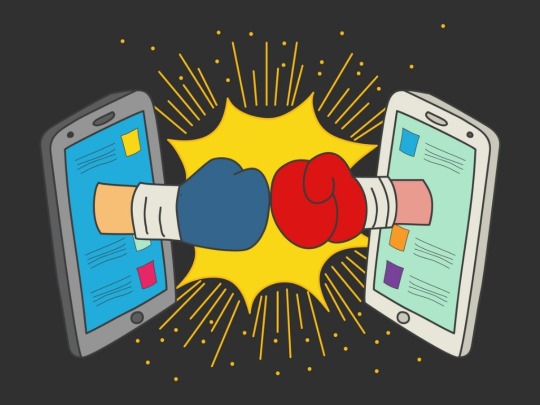
WEEK 10: DIGITAL CITIZENSHIP AND SOCIAL MEDIA CONFLICT
Social media has developed as a platform for many digital citizens to connect. It opened new environments so that people can share their thoughts, and beliefs about different topics. However, besides the bright side, social media also contains problems that are raised by itself. One of them is conflict, along with online harassment, which is growing at a fast pace, especially when there are controversial cases.
1. Why look at conflict?

These days, conflict on social media is a bulging problem. It refers to the intense movements, debates, and tensions created between users on various platforms. It includes the spread of information, contrasting viewpoints, or hostile activities which can result in misconceptions or conflict escalation. Social media has the power to shape perceptions, influence values, and mobilize users, impacting how conflicts manifest and evolve (Zeitzoff 2017). Examining conflict on social media is important due to its transformative impact on how conflicts unfold and evolve. It exposes the importance of power dynamics in digital citizenship, including control over resources, speech, platforms, and business interests. Many users aim to gain their power against their opinions, and viewpoints over many topics, especially controversial cases. Moreover, while digital communities can be seen to promote positive movements and relationships, they also face many bulging problems and complications. Power influence, misinformation, or online harassment, those communities are not immune to these drawbacks and can be easily affected if there is no proper social media governance.
2. Social media governance
The challenge of social media is planning what you want to post as opposed to randomly posting things and being sensitive to the fact that people take, [say], humor in different ways," says Katharine Brooks, EdD, executive director for personal and career development at Wake Forest University. These contents can be negative, cause controversies, or even conflicts between users. Therefore, the need for social media governance is essential to maintain the behaviors in the cyber environment.

Social media governance consists of the policies and guidelines that control the usage of social media platforms in communities, or society. It involves developing rules and frameworks that regulate the behaviors of its citizens, and organizations in the environment of social media. Facebook Community Standards, YouTube's Content Moderation, and the European Union's General Data Protection Regulation (GDPR) are remarkable examples of conducting guidelines on many platforms. In smaller communities, there are also governance models such as Redditquette, Subreddit-Specific Rules on many Subreddits, or Server-Specific Rules on many Discord servers. These guidelines are working to improve the etiquette of their community members by establishing more specific rules, limiting sensitive phrases, or even banning content that may not be offensive but is not relatable to the focused topic of the community. These movements help clean the environment of the platform and bring users a safe space for sharing related thoughts and opinions.
However, besides having good impacts on governing communities, these guidelines still have their downsides. On some occasions, they can missee clean contents and falsely accuse them as negative. Several governance systems are mainly controlled by AI, in their automatic abilities may not be as accurate as humans in some cases. Many positive contents consist of sensitive phrases, whether they have no intention to be offensive, and can still be detected as violations, while many negative contents can surpass the barrier and still appear on the platform. These contents vary in many forms such as misinformation, trolling, or online harassment, which takes a high percentage in many negative behaviors.

3. Online harassment
Online harassment refers to a broad spectrum of abusive behaviors enabled by technology platforms and used to target a specific user or users, including flaming (inflammatory language), doxing (the stealing of personal information), or public shaming (using social media sites to humiliate a person)… (Blackwell et al. 2017).
Although there is a long history of research on online misbehavior and community moderation, harassment and other types of violence continue to be common online. A Pew survey conducted in 2017 revealed that 66% of adult internet users have seen someone be harassed online, and 41% of users have personally experienced online harassment (Blackwell et al. 2017). Gender also plays a role in the types of harassment people are likely to encounter online. Overall, men are somewhat more likely than women to say they have experienced any form of harassment online (43% vs. 38%), but similar shares of men and women have faced more severe forms of this kind of abuse (Vogels 2021).

In real life, there have been many remarkable cases in which not an individual, but a group of community, was cyberbullied. Gamergate was an intense online harassment movement that began in 2014 in the gaming community. It was made up of a series of aggressive sexist assaults on women in the gaming industry, especially game creators, reviewers, and journalists. The case started from the personal life of game developer Zoë Quinn. Her ex-boyfriend created a blog post with false accusations regarding her relationships. This resulted in a rise of harassment and abuse aiming Quinn. She was threatened with doxxing, violence, and harmful web campaigns targeted at ruining her reputation.
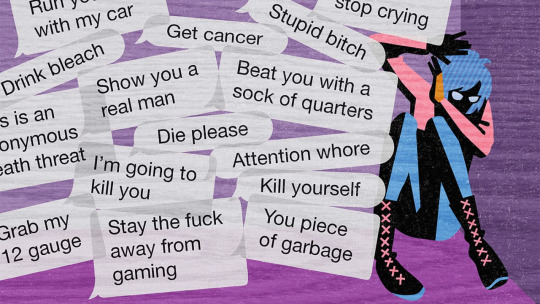
"You really can be judged harshly with one tweet," says Katharine Brooks, EdD, executive director for personal and career development at Wake Forest University (Robledo 2015). The cause of online harassment comes from many movements, from a simple, innocent tweet to a controversial activity of a celebrity. Historically, abusive behavior online has been relegated to fringe cases—“narcissists, psychopaths, and sadists (Buckels, Trapnell, and Paulhus 2014) who are either exceptions themselves, or inhabit atypical parts of the Internet.

When people face up with their problems, some of them may leverage the digital environment as a method to ease themselves and express their feelings and viewpoints. They may see debating or harassing others as their “fetish” to lash out their negative feelings and feel more power, which is also another reason for online harassment. Online harassment can also come from power dynamics when those with more influence or reputation utilize their power to target and harass others. This can apply to citizens who feel powerless against many aspects of their lives as they may try to gain control and become more powerful when abusing others on digital platforms. The anonymity feature in those environments is a functional way for individuals to engage in harassing behavior without fear of immediate consequences or accountability. These causes increase the amount of abusive behaviors in the cyber environment, making the situation more intense.
4. What can we do to reduce this situation?
To ease the amount of online harassment behaviors, legal activities can be made to control the behavior of citizens. They can be used to identify and criminalize extreme activities such as threats or cyberbullying. Along with that, appropriate laws and punishments should be published to apply to each behavior, especially criminal penalties. Therefore, legal solutions will deter others that online harassment is not acceptable and can lead to serious consequences. For instance, 18 U.S.C. § 2261A prohibits severe harassment or stalking using the internet, while 18 U.S.C. § 875 prohibits making threats across state lines, and 47 U.S.C. § 223 prohibits harassing or threatening messages across state lines (Federal Laws & Online Harassment 2021).

Despite legal movements from social media governments, there is still a lack to be full control of digital citizens' behaviors. Therefore, other actions to improve the awareness and behavior of digital citizens should also be imposed. Promoting awareness regarding internet harassment is essential. This includes educating people about responsible ethics, digital citizenship, and the negative effects of harassment. Citizens will behave more properly, respecting others’ differences and discussing in a peaceful environment. Many cases relating to cyberbullying or harassment will also be more detected as users are more aware of their responsibility in the digital environment. They may report violating cases to the managing tools of social media, where they will be more easily detected and punished. Keeping clean of the digital environment requires both the contribution from social media governance and the citizens themselves.

References:
1. Blackwell, L, Dimond, J, Schoenebeck, S & Lampe, C 2017, ‘Classification and Its Consequences for Online Harassment’, Proceedings of the ACM on Human-Computer Interaction, vol. 1, no. CSCW, pp. 1–19.
2. Buckels, EE, Trapnell, PD & Paulhus, DL 2014, ‘Trolls just want to have fun’, Personality and Individual Differences, vol. 67, pp. 97–102.
3. Federal Laws & Online Harassment 2021, Online Harassment Field Manual, viewed 25 March 2024, https://onlineharassmentfieldmanual.pen.org/federal-laws-online-harassment/.
4. Robledo, SJ 2015, ‘Navigating conflicts on social media’, https://www.apa.org, September, p. 26, viewed 25 March 2024, https://www.apa.org/gradpsych/2015/09/social-media.
5. Vogels, E 2021, The State of Online Harassment, 13 January, viewed 25 March 2024, https://www.pewresearch.org/internet/wp-content/uploads/sites/9/2021/01/PI_2021.01.13_Online-Harassment_FINAL-1.pdf.
6. Zeitzoff, T 2017, ‘How Social Media is Changing Conflict’, Journal of Conflict Resolution, vol. 61, no. 9, pp. 1970–1991.
0 notes
Text
WEEK 9 - First, a way to escape for introverts, now an encouragement to socialise and share the experience of gaming…
#Sims & #Minecraft…i’m not embarrassed to admit when asked what my escape from reality was and sometimes, when given the time, still is today…but this is not the same anymore and i’ll explain why.
Today, the world of online gaming has shifted communities into even more active consumers of digitalised technology, through social gaming and online streaming, for example the platform #twitch.
Live streaming as a new phenomenon, allows for individuals gaming privately in their rooms to broadcast live screen recordings whilst playing, “allowing gamers of all kinds to transform their private play into public entertainment.” (Taylor, TL 2018)
Time and resourcesare transforming the digital world with different techniques attempting to connect individuals, and therefore detach more from life as it stands without a device, and gaming is a supporting argument of this.
Video, and online games attempt to give society a sense of more control over their actions and decisions, but ultimately, it is evident this addiction and obsession for some people just empathises how detached we are all becoming from ‘real life.’ However, the emergence of live stream gaming, seemingly connects gamers across the world, and introduces a social aspect to what once was seen as so isolating.
“That feeling—that I was not watching alone but instead alongside thousands of others in real time—was powerful.” (Taylor, TL 2018)
Although many could still argue that the emergence of live stream gaming encourages people to isolate within four walls, I would argue that it is an improvement from the past, and opens floodgates to even more socialising opportunities. For example, individuals with social anxiety problems, that limit their initial real life connections, may feel more comfortable doing what they love with other people.
Another argument to support gaming culture today, is that of new creator income opportunities, that new platform #twitch and older platform #youtube can facilitate, “Live streaming offers professional esports players and teams opportunities to build their audience, brand, and incomes, while streaming their practice sessions—often straight out of their bedrooms” (Taylor, TL 2018)
However, it cannot be a completely positive, and safe platform as, like almost every online community, bullying and harassment still exists and sometimes prevails as a result of keyboard warriors.
Keyboard warriors, or #trolls, are able to reign these digital communities as the ability to hide behind a screen, provides little accountability, and therefore “online harassment is so pervasive in digitised spaces that it is often viewed as the ‘norm.’” (Chia, Keogh, Leorke, and Nicoll 2020)
Combatting the issue of digital harassment, is still a widespread problem across all platforms, providing threats for gaming communities which may explain some of the fear for the Platformisation of gaming that sees too todays social construction of live streaming.
Overall, like all platformisation happening around us today, digital communities encourage more activity from consumers, rather then passive standstills that existed previously, and I would argue this is good.
References -
Aleena Chia, Brendan Keogh, Dale Leorke, and Benjamin Nicoll (2020). "Platformisation in game development", Internet Policy Review 9 (4). DOI: 10.14763/2020.4.1515.
Taylor, TL 2018, ‘Broadcasting ourselves’ (chapter 1), in Watch Me Play: Twitch and the Rise of Game Live Streaming, Princeton University Press, pp.1-23
2 notes
·
View notes
Text
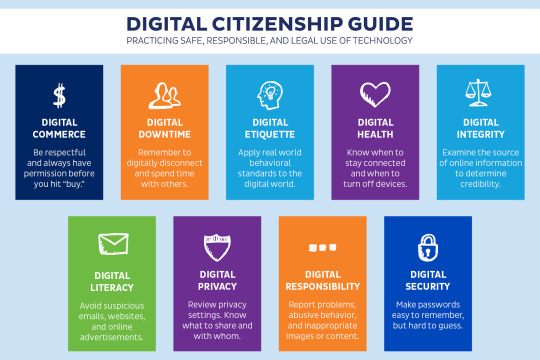
The Link Between Digital Citizenship and Social Media Governance
In the age of social media, the idea of digital citizenship has arisen as people navigate the online environment (Saputra & Siddiq, 2020). Digital citizenship encompasses the conscientious and moral utilisation of technology and the internet. Due to the swift advancement of technology and communication, social media has emerged as a dominant force, exerting influence on multiple facets of individuals' life. Based on the available sources, social media has both beneficial and detrimental effects on digital citizenship and has the capacity to disturb people' conduct. Social media has a beneficial effect on digital citizenship by enabling active participation in civic activities (Mulyono, 2020). Studies on the usage of digital media among young people have demonstrated that social media platforms have the potential to enhance participation in civic and political activities, thereby contributing positively to the concept of digital citizenship. Despite the good effects, social media also has detrimental effects on digital citizenship. The proliferation of malicious propaganda, inflammatory rhetoric, misinformation, and contentious debates has become a prevalent concern in contemporary digital culture. The adverse effect on digital citizenship mostly stems from the lack of readiness among citizens to confront this period of disruption. The adverse effects of social media on digital citizenship underscore the necessity of digital literacy (Saputra & Siddiq, 2020).
The relationship between digital citizenship and social media governance is reciprocal. As social media platforms have become the main venue for communication, expressing views, and participating with different communities, the concept of digital citizenship has grown. The potential of this has positive ramifications, including the enhancement of civic and political engagement. Research has indicated that digital platforms with participatory features might significantly increase the engagement of young individuals in democratic processes (Youth Perspectives on Technology for Democracy, 2022). Conversely, inadequate preparedness for the swift growth of social media can result in disturbances in digital citizenship, which are seen in the widespread occurrence of false information, offensive language, and other unethical behaviours online (Saputra & Siddiq, 2020). Therefore, it emphasises the importance of digital literacy, an essential aspect of digital citizenship that empowers individuals to differentiate reliable information and actively participate in digital environments.
References
Mulyono, B. (2020, March 24). Initiating the Engagement of Young Citizens in a Quality Politics in the Social Media Era. Download.atlantis-Press.com; Atlantis Press. https://doi.org/10.2991/assehr.k.200320.012
Saputra, M., & Siddiq, I. H. A. (2020). Social Media and Digital Citizenship: The Urgency of Digital Literacy in The Middle of A Disrupted Society Era. International Journal of Emerging Technologies in Learning (IJET), 15(07), 156. https://doi.org/10.3991/ijet.v15i07.13239
Youth Perspectives on Technology for Democracy. (2022). Youth Perspectives on Technology for Democracy. Www.sparkblue.org. https://www.sparkblue.org/insights_youth_tech4dem
0 notes
Text
Week 5. Digital Citizenship
The idea of citizenship has been extensively studied in education, communication, and political science. Within academia, there's a growing focus on digital citizenship, which has become an important part of many school systems' goals. Recent events like the Black Lives Matter (BLM) movement and the Covid-19 pandemic have underscored the significance of understanding digital citizenship, especially in how it impacts marginalized communities.
1. Definition: What is digital citizenship? (Council of Europe 2022)

Digital citizenship involves the skills needed to actively and responsibly engage online and offline, from local to global communities. It emphasizes the ability to adapt to changing digital technologies from childhood onward. Digital citizens participate in various online activities such as creating, sharing, learning, and working, while also respecting the rights and differences of others. These skills shape how individuals behave and interact in the online world, encompassing principles, attitudes, abilities, and knowledge necessary to navigate the digital landscape responsibly. They enable individuals to influence technology according to their needs rather than being solely influenced by it.
2. Approaches to Digital Citizenship (Choi & Cristol 2021)
There are three main approaches to digital citizenship.
(1) Unidimensional Approach: This approach focuses on specific aspects of digital citizenship within different disciplines such as education, communication, journalism, and political science.
(2) Multidimensional Approach: This approach emphasizes various dimensions of digital citizenship.
It categorizes digital citizenship into four main areas: digital ethics, media and information literacy, participation/engagement, and critical resistance.
Additionally, it proposes a digital citizenship scale model based on five levels of complexity: technical skills, local/global awareness, networking agency, critical perspective, and Internet political activism.
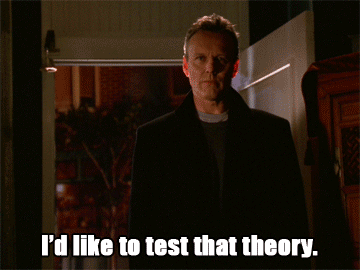
However, while the multidimensional approach is comprehensive, it lacks a focus on critical aspects of digital citizenship.
Therefore, there's a need for a more critical and radical approach to digital citizenship education. This approach should acknowledge and address unequal power dynamics and social injustices presented on the Internet as well as social media platforms.
A critical and radical approach to digital citizenship aims to make visible the social relations embedded in technology and advocates for emancipatory technological practices to promote social justice.
This sets the stage for introducing a framework in the next section.
3. Using An Intersectionality Framework for Digital Citizenship Education (Choi & Cristol 2021)
Intersectionality is a framework that recognizes how multiple aspects of identity intersect and interact across social determinants, contributing to complex inequalities.
This framework has been applied across various disciplines and topics to understand social and health inequities.
In the field of education, intersectionality has been used to analyze differences in educational experiences based on the intersection of gender and race within different age groups.
Intersectionality offers valuable insights for gaining a deeper understanding of digital citizenship and participatory democracy, particularly in relation to how social identities intersect with online activities and experiences.

4. Participatory Democracy and Digital Citizenship (Choi & Cristol 2021)
To begin with, the main aim of digital citizenship education is to promote participatory democracy, focusing on diversity, inclusion, equity, and social justice. Achieving participatory democracy involves everyday actions like expressing opinions and engaging in personalized politics. This can include discussing politics with friends, talking to public officials, working on political campaigns, or persuading others to vote for or against a candidate.
Nevertheless, participatory democracy extends beyond politics to include communication, engagement, and personal development in various aspects of life. Teaching digital citizenship should encompass different forms of participation, not just political involvement. By integrating digital citizenship education, participatory democracy can empower younger generations who are familiar with expressing themselves online across diverse areas. This can also amplify the voices of underprivileged students, making them more visible and heard.
5. Social Media, Hashtag Publics and Activism (Choi & Cristol 2021)
Social media is often used in schools to encourage civic engagement and political involvement among students. Teachers should understand the influence of social media in the public sphere and tailor it to meet students' individual needs. Social media allows marginalized groups to express their views publicly, as shown in Gleason and Von Gillern's study where participants supported Senator Wendy Davis in the #StandWithWendy movement to defend reproductive rights.
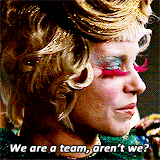
Teachers working with marginalized and/or under-represented students using technology or social media should recognize the biases present in current educational systems, which can perpetuate social inequalities. They should incorporate digital literacy into their teaching methods to accommodate diverse learners, thus enhancing learning outcomes and empowering students with various identities to express themselves.
In a study conducted at Thai Nguyen University in Vietnam, educators and students devised innovative strategies to enhance digital citizenship education. (Hoang et al. 2020)
While the teachers’ plans focused on improving students' digital etiquette in social media groups, students' action plans were more practical and specific, suitable for students' everyday life and academic study.
Teaching Action Plans
• Target disadvantaged students with limited digital access to online homework.
• Plans included:
(1) Assigning students in groups with device sharing
(2) Proposing extended library and computer lab hours
(3) Focusing on teaching teachers about important aspects of technology issues through workshops. (They understood how crucial this knowledge is for educators who regularly work with students online. This would help teachers better prepare students with the skills and knowledge for responsible technology use.)
Student Action Plans
• Plans included:
(1) Designing an application for time management and digital health
(2) Integrating digital citizenship into teaching internship programs
(3) Creating a YouTube-related video for parents to explain the dangers of letting children watch YouTube videos.
Overall, 70% of action plans received the highest score range for their good understanding of digital citizenship and applying the concept to real-life problems.
Last but not least, the article includes recommendations for institutions, such as creating open discussions, integrating digital citizenship content in syllabi, and providing accessible resources for students and parents.
In conclusion...
...understanding digital citizenship through an intersectional lens is crucial for fostering participatory democracy through digital citizenship education. Teachers should emphasize the intersectionality of race, gender, class, and language when addressing digital citizenship and related topics. This approach influences how educators, administrators, and policymakers perceive and support students' academic success and challenges in school.
Reference list
Choi, M & Cristol, D 2021, ‘Digital Citizenship with Intersectionality Lens: Towards Participatory Democracy Driven Digital Citizenship Education’, Theory Into Practice, vol. 60, no. 4.
Council of Europe 2022, 2022 Edition of the Digital Citizenship Education Handbook, Digital Citizenship Education (DCE).
Hoang, DTN, Tran, TTT, Nguyen, NTB & Nguyen, LT 2020, ‘Digital Citizenship Awareness in EFL Context in Vietnam : a Project Evaluation’, The Journal of AsiaTEFL, vol. 17, no. 1, pp. 225–233, viewed 16 December 2020, <https://www.researchgate.net/publication/340331318_Digital_Citizenship_Awareness_in_EFL_Context_in_Vietnam_A_Project_Evaluation>.
#mda20009#swinburne#digital citizenship#education#digital literacy#university#social media#politics#hashtag#activism
0 notes
Text
WEEK 10: DIGITAL CITIZENSHIP AND CONFLICT: SOCIAL MEDIA GOVERNANCE
This piece of writing will discuss online harassment, with a focus on how to best solve and deal with the issue.
WHAT IS ONLINE HARASSMENT?
Jones et al. (2013, p. 54, as cited in Haslop et al., 2021, p. 1420) define online harassment as the behaviors that are unwanted and offensive targeting directly at other people through modern technology channels, for instance, the internet. Online harassment can exist in various forms, for example: directly sending abuse messages, sexual images, spreading rumors, and so forth (Haslop et al., 2021, p. 1420).
THE REALTITY
According to Pew Research Centre & Southern and Harmer (2017; 2019, as cited in Haslop et al., 2021, p. 1420), online harassment is more likely to happen to women than men. A YouGov survey, including 2121 women and 1738 male participants, reports that sexual images have been sent to 40% of women participating in the survey without their requests, while only 26% of male participants have been sent those images (Smith 2018, as cited in Haslop et al., 2021, p. 1420). This phenomenon can be explained through the “nature” of online space, which is now considered a “public space”, where if women want to ensure their safety, they must exclude their presence from the space (Vitis & Gilmour, 2016, p. 339). Furthermore, Keraian & Megarry (2014; 2014, as cited in Vitis & Gilmour, 2016, p. 339) add that once women choose to participate in the digital space, they must take harassment and attack as an apparent and normal experience.
THE CONSEQUENCES
Being harassed online, numerous women chose to censor themselves to minimize the risk of further online harassment in the future (Lenhart et al., 2016, as cited in Haslop et al., 2021, p. 1421). Others change their names in the online world, reduce their time appearing online, become more selective in choosing what online site to use, or even shut down every online account (Gumbus & Meglich, 2013, p. 48; Franks, 2012, as cited in Vitis & Gilmour, 2016, p. 339). The “nature” of the online space causes these negative consequences, leading to demotivation and a decrease in women's engagement with online sites (Haslop et al., 2021, p. 1421).
HOW SOCIAL MEDIA PLATFORMS, AS ONLINE PLATFORMS, HELP FIGHT AGAINST ONLINE HARASSMENT?
Meta’s social media platforms, including Facebook, Instagram, and Messenger, and TikTok are now putting a lot of effort into controlling and preventing online harassment. Meta has used many strategies to control and prevent this issue, such as users reporting inappropriate content (e.g.: sexual images or offensive content) to Meta (Figure 1), Meta limiting and restricting connections between some specific user groups (Figure 2), etc. More information can be found on Meta: Prevent bullying and harassment). As for TikTok, the platform allows its users to control who can message them and who they can send messages to by having different options for setting their direct message (Figure 3); offensive comments can be filtered, and users can control who can comment under their videos (Figure 4); other strategies are shown in TikTok: Bullying prevention. The strategies that are used by these social media platforms help remove content that is harmful to users and allow users to actively protect themselves.

Figure 1: Meta's strategies in controlling and preventing online harassment
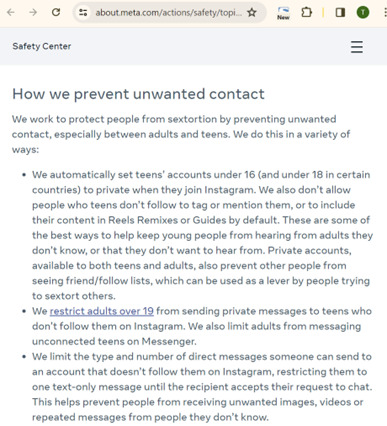
Figure 2: Meta's strategies in controlling and preventing online harassment

Figure 3: TikTok's strategy in controlling and preventing online harassment
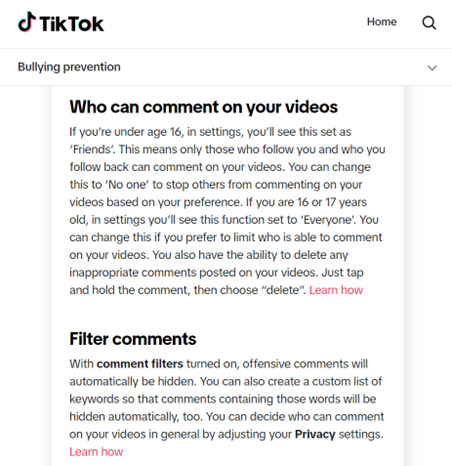
Figure 4: TikTok's strategies in controlling and preventing online harassment
ONLINE HARASSMENT MUST BE SOLVED FROM THE ROOT
Although social media platforms have used many strategies to prevent and control online harassment as mentioned above, those strategies are unbale to fully solve the issue. Schoenebeck et al. (2023, p. 4) claim that people’s behavior will not be changed after their social media accounts are banned or their inappropriate content is removed; additionally, removing content or banning users do not motivate people to not harass others in the online world.
THE SOLUTIONS FOR DEALING AND SOLVING ONLINE HARASSMENT
To truly and fully deal with online harassment, it is suggested that education, especially digital citizenship education, must be involved. The reason is that digital citizenship education teaches people to behave legally, ethically, and safely when they are appearing in the online world (Heath, 2018, p. 343). In addition, digital citizenship education also makes people become one of the three types of citizens, including “personally responsible citizens”, “participatory citizens”, and “justice-oriented citizens” (Heath, 2018, p. 345) or makes people become a citizen that has all those three characteristics. Digital citizenship education educates people on how they should behave online and in the long run, it can change their behaviors.
EXAMPLE
Thanks to digital citizenship education, some people become “participatory citizens," which refers to citizens who engage and participate in the community in order to solve social problems (Heath, 2018, p. 345). Anna Gensler (IG account: Instagranniepants) is a highlight example. As she has been harassed online and talked disrespectfully on online dating sites, as an artist and as a digital citizen, she has decided to fight against online harassment through her drawings (Figure 5). As stated in the article, “The intention of Gensler’s art is thus to ‘objectify back’, educate, name inappropriate behavior, punish perpetrators and assert herself.” (Vitis & Gilmour, 2016).

Figure 5: Anna Gensler as a participatory citizen
CONCLUSION
In conclusion, online harassment causes digitized inequality for women as it demotivates them from participating in the digital world. Although various social media platforms, such as Facebook, Instagram, and TikTok, are now putting efforts into controlling and preventing online harassment, they are still solving the surface of the issue. In order to fully solve online harassment, digital citizenship education is the most prioritized strategy.
REFERNCES
Haslop, C., O’Rourke, F., & Southern, R. (2021). #NoSnowflakes: The toleration of harassment and an emergent gender-related digital divide, in a UK student online culture. Convergence: The International Journal of Research into New Media Technologies, 27(5), 1418–1438. https://doi.org/10.1177/1354856521989270
Heath, M. K. (2018). What kind of (digital) citizen? The International Journal of Information and Learning Technology, 35(5), 342–356. https://doi.org/10.1108/ijilt-06-2018-0067
Schoenebeck, S., Lampe, C., & Triệu, P. (2023). Online Harassment: Assessing Harms and Remedies. Social Media + Society, 9(1), 1–12. https://doi.org/10.1177/20563051231157297
Vitis, L., & Gilmour, F. (2016). Dick pics on blast: A woman’s resistance to online sexual harassment using humour, art and Instagram. Crime, Media, Culture: An International Journal, 13(3), 335–355. https://doi.org/10.1177/1741659016652445
#swinburne#mda20009#week10#online harassment#participatory citizen#digital citizenship#digitized inequalities#women#social media#humour#digital space
0 notes